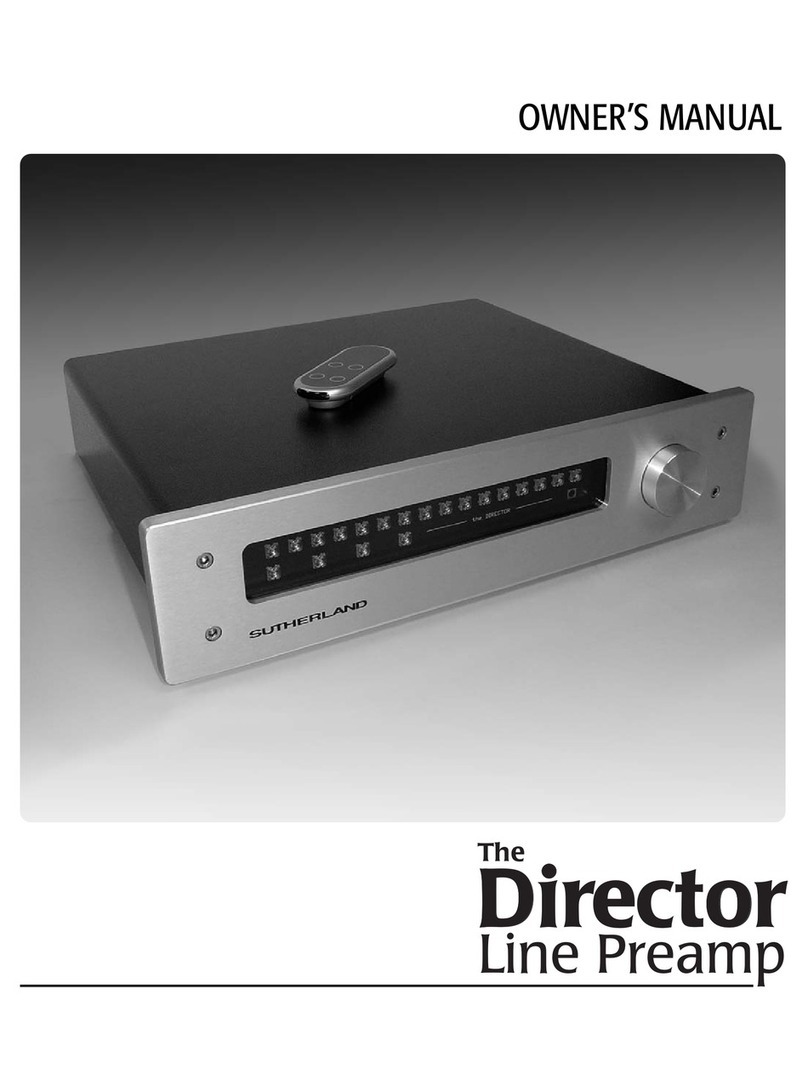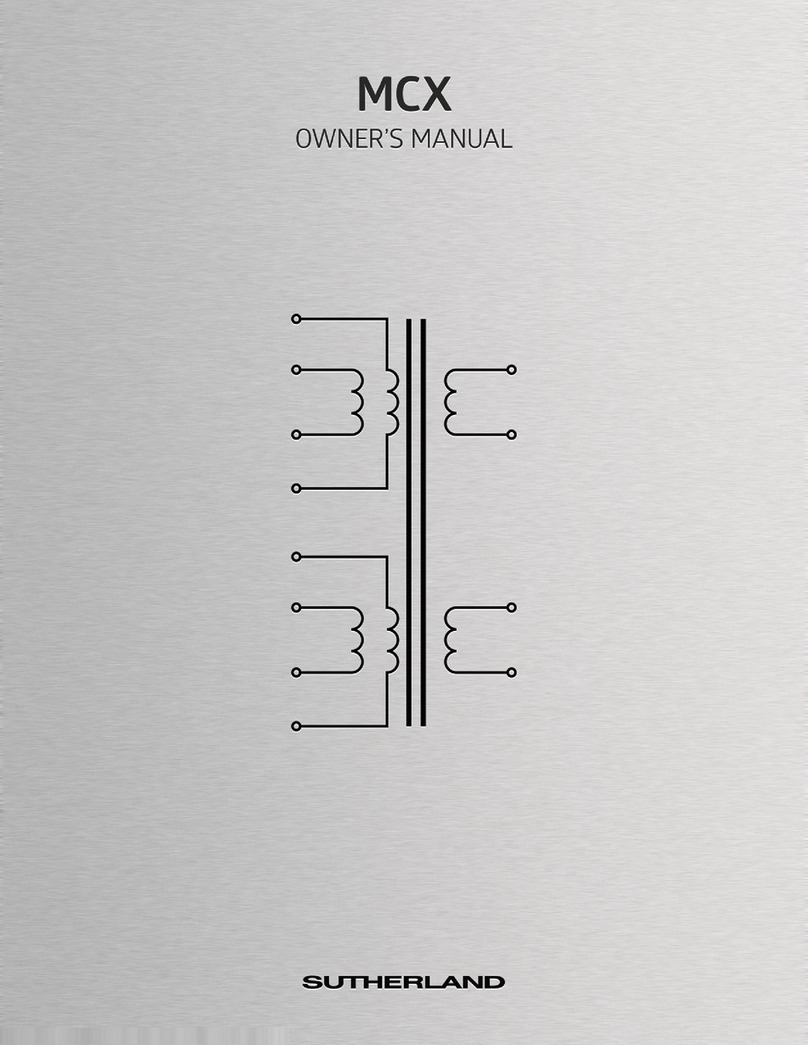
Abrief look at just some of the Ph3D's features:
•Complete isolation from the noisy AC power line
•No chasing down elusive ground loops
•Easy-to-find, easy-to-buy,easy-to-replace D-cell bat-
tery power supply
•Low-batteryindicator light
•Built-to-last, cold-roll steel with baked-on epoxy pow-
der coating
•Complete electrostatic and magnetic shielding
•Easy internal access with stainless steel thumb-
screws
•Convenient selection of five cartridge-loading val-
ues
•Convenient selection of five gain settings
•Configured with gold-plated headers and shunts
•High contact pressure, large contact surface
•No cheap DIP rocker switches
•Audiophile grade components, including Wima
polypropylene/film capacitors, Dale/Vishay CCF-55
metal film resistors, double-sided FR-4 fiberglass cir-
cuit board, gold-plated RCA jacks and gold-plated con-
figuration setting
•Dual mono circuit boardlayout for best channel
separation (You get exactly the same layout for each
channel – check out the photos)
Design Philosophy
An amplifier does not make the input signal "bigger."
Instead, it uses the input signal to control the delivery of
power from a power supply. So the increased size of the
output signal comes entirely from the power supply. The
quality and purity of the power supply is an essential
foundation for creating a high-quality output signal. Still,
in many designs, the power supply is given only casual
consideration.
Consider that one of the noisiest components in your
home stereo is the incoming AC power. Even if it were
delivered to your home as an idealized 60 Hz sine wave,
it would not stay that way long. One of the biggest pol-
luters is the audio power amplifier.It does not draw cur-
rent from the power line evenly. There is a large current
spike drawn when the sine wave reaches its voltage
extremes, while at other times current draw is essentially
zero. High-frequency harmonics and noise are introduced
into the same power line used for sensitive phono pre-
amplification. There are, of course, many other factors
that contribute to power line distortion and noise.
While several preamplifier designs have aimed to isolate
the AC power line with varying degrees of success, ulti-
mate power supply purity cannot be achieved without
absolute elimination of the AC power line. In the case of
the Sutherland Ph3D, there is no connection to the AC
power line at all – period. Instead, the power for the
Ph3D is 16 alkaline D cells. In this application, the bat-
teries have a useable lifetime of 1,200 operating hours.
As they age, low-power supply impedance is maintained
by high-value storage capacitance. And unlike designs
that use rechargeable batteries, the Ph3D is not compro-
mised and encumbered with battery-charging circuitr y. In
fact, one of the surprising features of the Ph3D is the
absence of ANY power connections on the back panel. It
is totally isolated from any outside power noise.
Unlike the much more expensive Ph.D., the Ph3D does
not have automatic power management. Power is con-
trolled the old-fashioned way, with a manual toggle
switch. However, if you remember to turn off your Ph3D
after each listening session, you'll enjoy about 1,200
hours of effective use before having to change the batter-
ies, which is a simple process.
In designing the Ph3D, Sutherland concentrated on elimi-
nating needless power consumption. So as very little
power is used, verylittle heat is generated within the
components. There is essentially no temperature rise
and no need for "warm-up" time. The design also has
very little or no DC voltage across the signal-carrying
capacitors, so that dielectric forming is not an issue.
YOUR SUTHERLAND Ph3D
Anote from designer RON SUTHERLAND:
Thank you for choosing the Ph3D for your
listening system. If you are the kind of
person that sees aesthetic beauty in sim-
plicity and no-frills functionality, you are
going to appreciate the design choices of
this unit. The Ph3D is a slice of the Ph.D
and a slice of the PH-1P, two of my earli-
er phono preamp designs. Each slice was
carefully chosen to deliver the essence
of true high-end performance in an
an innovative package. Enjoy the ele-
gance of the Ph3D. But most importantly,
enjoy how it sings in your system.
Happy listening,
Ron





























